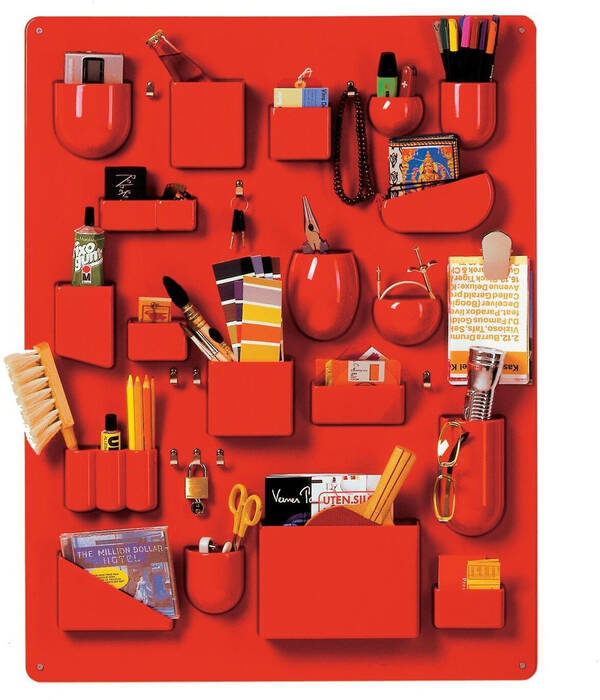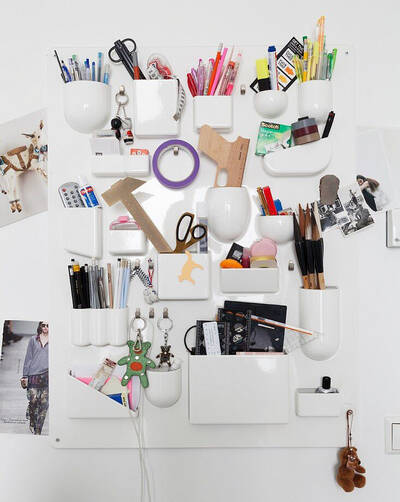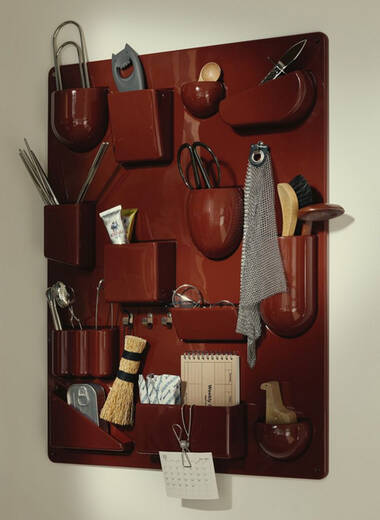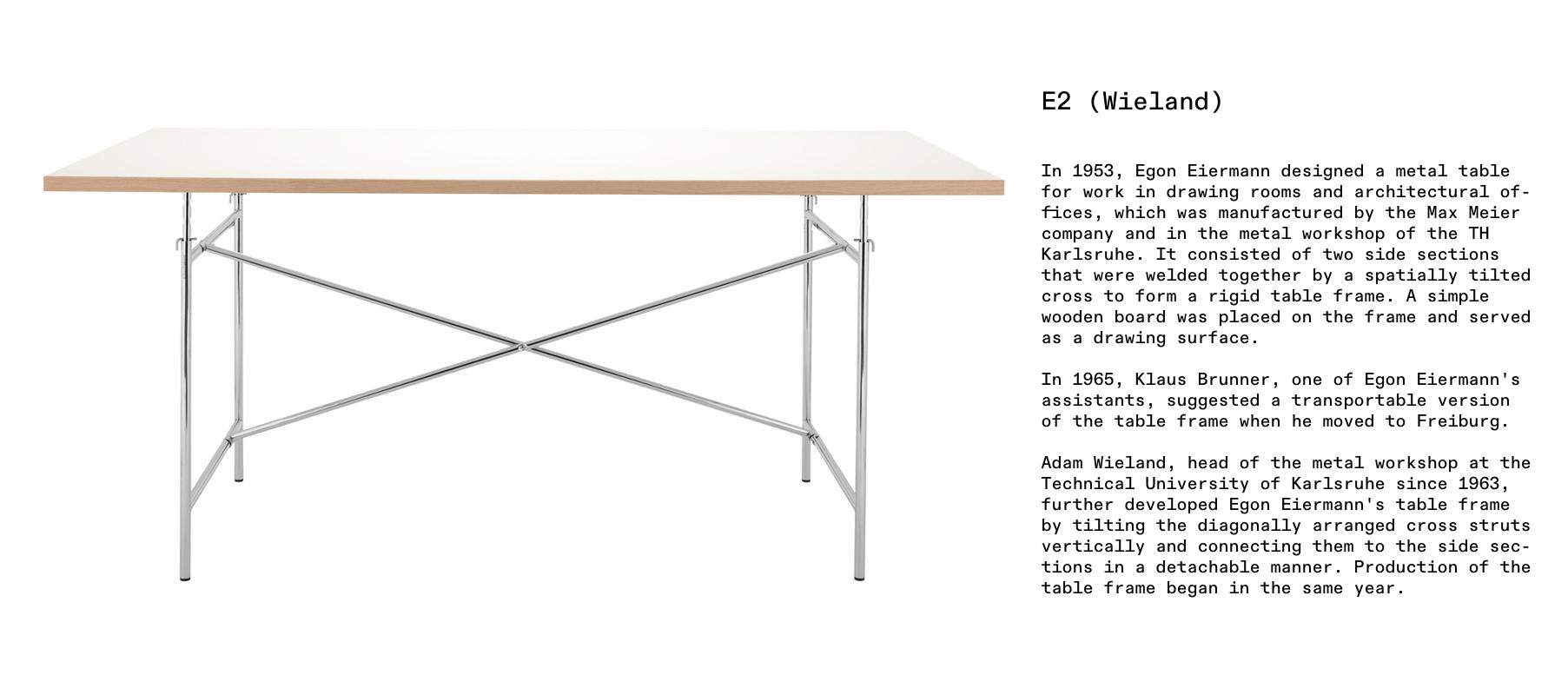Organisation Tools/Utensilo
 Originally, the Uten.Silo came about by chance. Dorothee Becker, then married to lighting designer Ingo Maurer, was inspired by a wooden toy she designed in 1968, which consisted of a large wooden board with geometric cut-outs and the corresponding counterparts. This idea of modularity and functional storage of things originally placed in a vertical structure later found its way into the design of the Uten.Silo. The design was first presented at the Frankfurt Trade Fair in 1969 and immediately caused a sensation.
Originally, the Uten.Silo came about by chance. Dorothee Becker, then married to lighting designer Ingo Maurer, was inspired by a wooden toy she designed in 1968, which consisted of a large wooden board with geometric cut-outs and the corresponding counterparts. This idea of modularity and functional storage of things originally placed in a vertical structure later found its way into the design of the Uten.Silo. The design was first presented at the Frankfurt Trade Fair in 1969 and immediately caused a sensation.
Today, the Uten.Silo is a true cult object and an icon of functional design. For many people, it is not only a practical organising system, but also a pop-culture object that reflects the aesthetics and culture of the late 1960s. In recent years, the product has experienced a renaissance and can be found in many modern homes and offices. But the success of the Uten.Silo is more than just the result of clever design. It is also a story of innovation, inspiration and the combination of art and functionality.
(Source: Design Bestseller)
IDEA
Contrary to my love of organisation tools/systems I am a very unorganised person but the idea of a thing having it's designated place in a system feels very pleasing, like watching an oddly satisfying video of things matching perfectly. The ideal victim for any reorganisation could be the studio space of each degree at HfG. Especially the Eiermann desks, the design is so minimalistic that there is no place to store your things. The construction of the tables is so simple that there is so much you can do with them. You can add cup holders, hooks, fabric sides, CPU holders, trash cans, metal grates or fabric storage. Whatever you can think of, you can add it to the frame.


